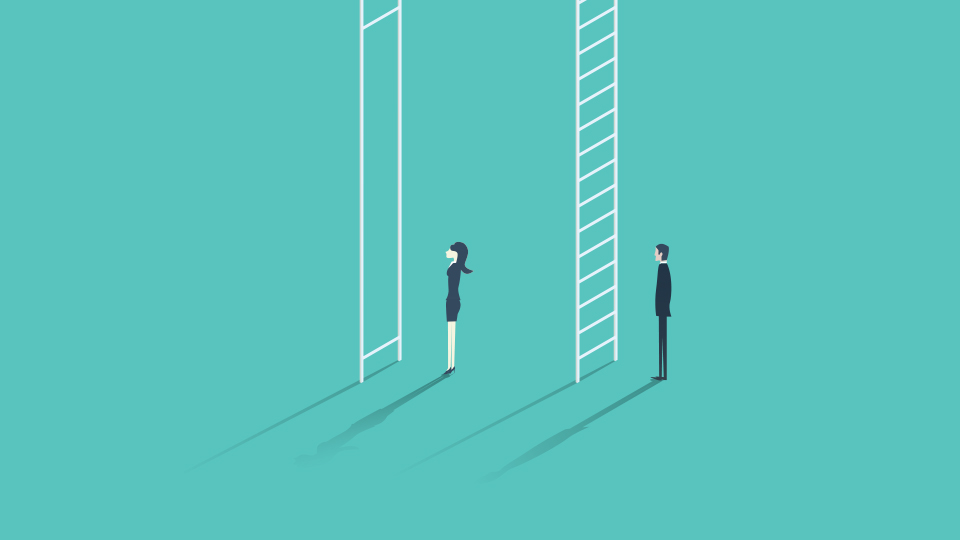What is gender bias and how does it impact women?
Emma Lennon | March 4, 2022

Feminists in Australia have been fighting for gender equity since 1882, in the hopes that women would someday enjoy equal rights and opportunities for participation.
Out of necessity, much of this work historically centred on dismantling oppressive systems and legislation that prohibited women from enjoying financial freedom, entering the workforce, or making their own reproductive decisions.
Significant strides have been made towards breaking down some of these more obvious barriers to gender equity, such as laws that once forbade women from voting or working.
Unfortunately, women continue to have their potential hindered by the more insidious, subtle form of discrimination known as gender bias.
Gender bias is a broad term used to describe how societal influences shape individual and collective psychology, creating prejudices and assumptions linking certain attributes to one’s assigned gender.
Gender bias is pervasive, contributing to issues like eating disorders and the gender pay gap, and appears to remain persistent even among otherwise progressive countries.
According to a recent study by the UN Development Programme (UNDP), about 90 per cent of people worldwide still hold at least one bias against women. These biases are held across a range of contentious issues like reproductive rights, politics, education and economics.
Concerningly, while these biases appear to be diminishing in some areas, in others they are actually increasing, indicating a possible sociopolitical backlash against the gender equality movement.
Explicit gender biases are conscious ideologies that people hold about folk of different genders, such as believing that men are inherently better with money than women. Those with explicit gender bias may willingly acknowledge these beliefs, often citing incomplete or skewed research to lend credibility to their views.
In contrast, implicit bias can influence how we view and treat people based on their gender without us even realising it. For example, even if one explicitly holds the belief that women and men are equally good at managing money, implicit bias may cause people to subconsciously assume that men are better placed to manage the household finances, or are more likely to make successful investors.
Unpacking these biases, most of which have been deeply entrenched from a very early age, requires patient, conscious unlearning, especially if we are not even aware that our worldview is rooted in bias.
How stereotypical gender norms widen inequities
From birth, humans begin absorbing information from our environment, shaping our understanding of the world around us.
Initially, our primary caregivers are our main influence, often the first people to impart lessons about safety, communication, and values. This is initially a passive, unconscious process whereby we pick up on the language and behaviours our family use for different people and situations and internalise those patterns as ‘normal’, without much further analysis or questioning.
These observed patterns develop into gender biases, which are further shaped or reinforced by other social settings, like school or work, as we age. By the time we enter secondary school, most of us already have at least a handful of stereotypical ideas of how boys and girls ‘should’ look, think, speak, and behave.
Biased, rigid and narrow ideals of what it means to be masculine or feminine can seriously undermine the freedom, choices and safety of women and non-binary people.
Gender bias and misogynistic stereotypes are a key driver of men’s violence against women, which are sometimes weaponised to minimise the very real dangers of domestic violence. An extreme example is the dismissal of the serious nature of marital rape, by those whose gender bias manifests as a belief that women are the sexual property of their husbands.

Biased assumptions are not always so obviously dangerous, but often cleverly disguised as innocent observations or even compliments.
Many people are biased to believe that women are naturally better caretakers, communicators and multitaskers. Despite a lack of compelling evidence to support this entrenched stereotype, it is frequently cited as the reason even professional women tend to take on more than their fair share of domestic and childcare tasks, as well as adopting the majority of the mental load in their family unit.
Eschewing rigid, harmful gender biases is not to discount some legitimate biological differences altogether. In fact, failing to address medical differences between sexes has led to devastating medical consequences for women.
Medical research and clinical trials often only include male participants, with researchers assuming that what will work for men will work equally well for women. This incorrect assumption has created a glaring gap in adequate medical research, which means that women experience medical side effects, and some medical conditions, at rates far higher than men.
Women also are more likely to have health concerns or symptoms dismissed by their doctor, especially those who contend with the additional challenges of racism, ableism, fatphobia, homophobia or transphobia.
Clearly, holding onto the outdated notion that ‘men are from Mars and women are from Venus’ is not as harmless as it may seem.
Unpacking implicit and explicit assumptions to break the bias
Rather than despair at the slow rate of progress, or feel defeated by the fact that gender bias is actually increasing on average, it can be helpful to know what we can do to evoke meaningful change.
Gender norms are constantly being shaped, reinforced, or changed by social interactions and behaviours, making the language we use in our own inner circles a great place to start. Notice how often you use gendered assumptions to make decisions or judgements, and gently try to steer yourself towards more gender-neutral language and thought patterns.
Those wishing to dive deeper to identify their own biases can complete Harvard University’s Implicit Association Test to understand where they need to direct their efforts the most.
Small behavioural changes like using the term ‘parental leave’ instead of ‘maternity leave’, or ensuring that men and women fairly share domestic and family responsibilities, can create meaningful flow-on effects that have the power to further society’s progress towards equality.
Challenging gender bias on an individual level also lays the important groundwork for change on a broader, more systemic level, so that future generations can enjoy their lives untethered by narrow, antiquated ideas of how men and women ‘should’ feel, think, and behave.
A world where men are just as free to be nurturing, compassionate, and sensitive as women are to be strong, independent, and business savvy, is one where we are all truly free to be our truest, most authentic selves, free from the suffocating influence of gender bias.
Sponsored
We have a request
SHE DEFINED’s journalism is independent and we’re committed to elevating the voices of women by putting them front-and-centre in our stories and giving them a platform to speak up.
Quality journalism and editorial content takes time, money and resources to create, which is why your support matters. We don’t have a paywall or exclusive subscriptions because we believe in keeping our stories open to everyone.
Help support our mission by making a financial contribution today.

Emma Lennon
Emma Lennon is a passionate writer, editor and community development professional. With over ten years’ experience in the disability, health and advocacy sectors, Emma is dedicated to creating work that highlights important social issues.






